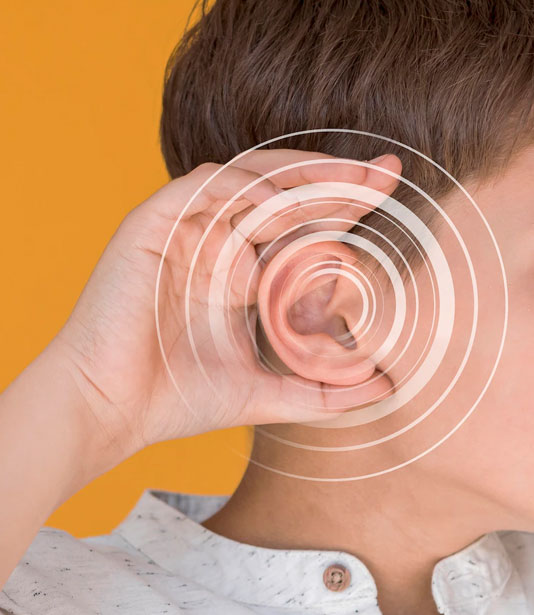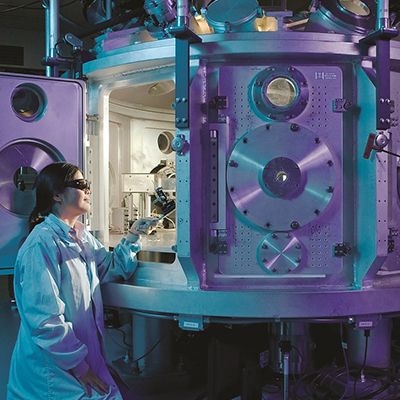
Definition
Noise level tests and measurements
High sound level – also known as noise – is defined as undesirable and troublesome vibrations of the elastic medium affecting the human hearing center. According to the Regulation of the Minister of Economy and Labor, noise is such a level of sound that can permanently damage the hearing center or any other element of human health. Excessive sound levels can lead to hearing loss and contribute to accidents at work.
Noise is vibrations of liquids, gases or solids that cause a change in pressure (disturb the balance of the medium). The reference pressure for the sound level test is atmospheric pressure. Vibrations are transmitted through the structure of the medium, emitting acoustic waves.
The difference between the pressure in the medium when the acoustic wave passes through it and the reference (atmospheric) pressure is expressed in Pa (Pascals). Pressure measurements are made on a logarithmic scale of sound pressure, so that sound level tests are based on the measurement of the sound pressure level (Lp) in decibels.
Noise is classified according to the frequency of vibrations of the medium. According to this division, we can distinguish ultrasonic noise and infrasound noise. Vibrations of a medium with low frequencies are called infrasound (1-20 Hz). The vibrations of the medium with high frequencies are called ultrasound (10 000 – 100 000 Hz).
The human ear can hear sounds on the spectrum between 20 and 20 000 Hz.
How does noise affect human health?
Too high levels of noise – both infrasound and ultrasound – contribute to the occurrence of hazards, which can be divided into two categories:
Threats to the hearing organ
Irreversible damage to the hearing organ usually occurs after long exposures to the sound level oscillating over 80 dB. The primary defense reaction is to raise the audible threshold. Moreover, impulse noise at the level of 130 – 140 dB can contribute to the formation of cavities in the eardrum.
Threats affecting other senses and organs in the human body
Such dangers resulting from too high sound level include:
- Loss of attention and concentration
- Change in heart rate and blood pressure
- Disruption of processes in external secretion glands
- Effect on intestinal and gastric peristalsis
- Damage to the central nervous system


Equipment
ENVILAB-EKO measuring equipment
The ENVILAB-EKO workplace environment laboratory is equipped with measuring equipment capable of conducting a comprehensive assessment and testing of sound levels. We have a modern and fully professional measuring equipment, which includes a sound level meter type SVAN 971 with SV 57357 preamplifier and 7052E microphone.
With this set of devices, we measure:
- Level of exposure to noise related to the eight-hour daily working time
- Maximum sound level A
- Peak sound level C
We make measurements throughout entirety of Poland.
Pomiar hałasu w pomieszczeniach w budynkach mieszkalnych, zamieszkania zbiorowego lub przeznaczonych na pobyt ludzi.
Pomiar hałasu w pomieszczeniach w budynkach mieszkalnych, zamieszkania zbiorowego lub przeznaczonych na pobyt ludzi wykonywane są zgodnie z normą PN/87/B-02156. Norma jest wycofana ze zbioru Polskich Norm, lecz jest powołana w Załączniku nr 1 do Rozporządzenia Ministra Infrastruktury z dnia 12 kwietnia 2002 w sprawie warunków technicznych, jakim powinny odpowiadać budynki i ich usytuowanie (t.j. Dz. U. 2019, poz. 1065 z późn. zm.), co wymusza jej stosowanie.
Norma dotyczy pomiarów hałasu:
– przenikającego do pomieszczeń od poszczególnych instalacji budynku np. wentylacja, winda
-od urządzeń i instalacji działających w pomieszczeniach nie związanych z funkcjonowaniem budynku
– od urządzeń zlokalizowanych na zewnątrz budynku.
Legal provisions
Standards and legal provisions specifying how the noise measurements in the workplace environment are to be conducted:
- Requirements and scope of measurements determined in accordance with current standards.
- Environmental Protection Law (Journal of Laws of 2013, item 1232, as amended).
- Regulation of the Minister of Environment of June 14, 2007, on permissible noise levels in the environment (Journal of Laws of 2007, No. 120, item 826, as amended).
- Notice of the Minister of the Environment of 15 October 2013 on the publication of a uniform text of the regulation on permissible noise levels in the environment.
- Regulation of the Minister of the Environment of 30 October 2014 on the requirements for measuring emissions and measuring the amount of water drawn.
- Regulation of the Minister of the Environment of June 16, 2011, on the requirements for measuring levels of substances and energy in the environment by the operator of a road, railway line, tram line, airport, and seaport.

